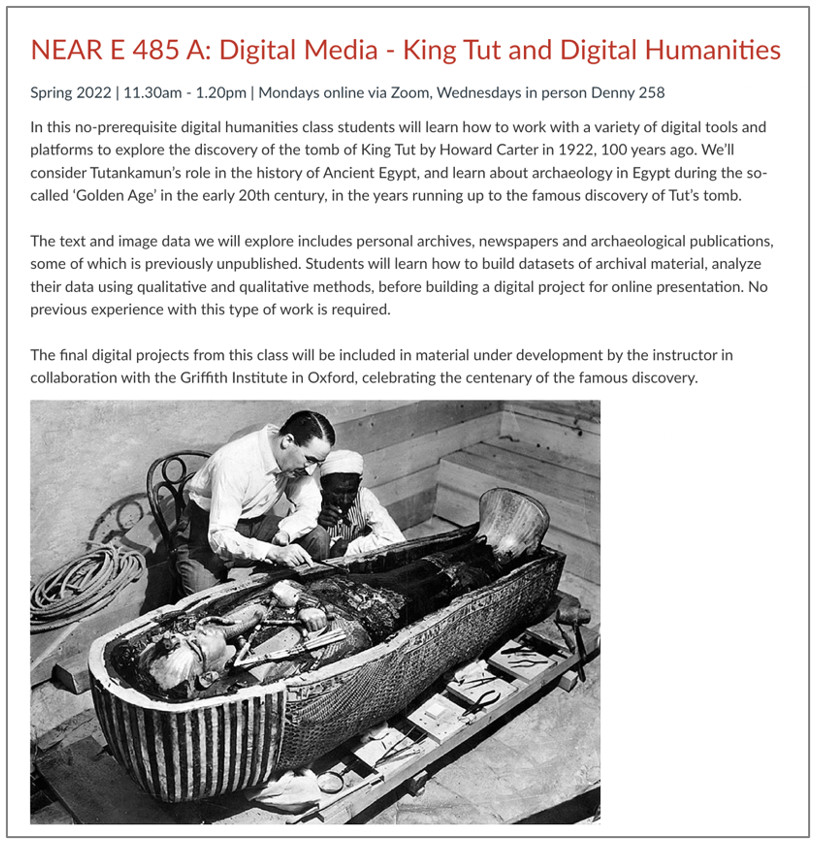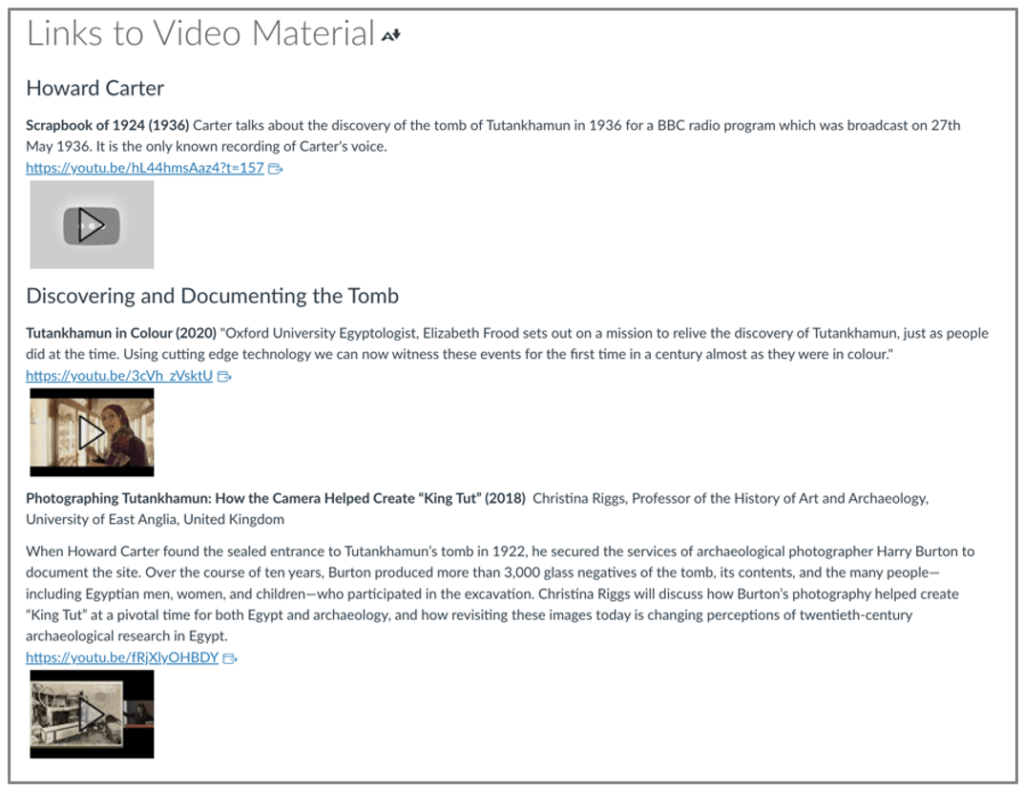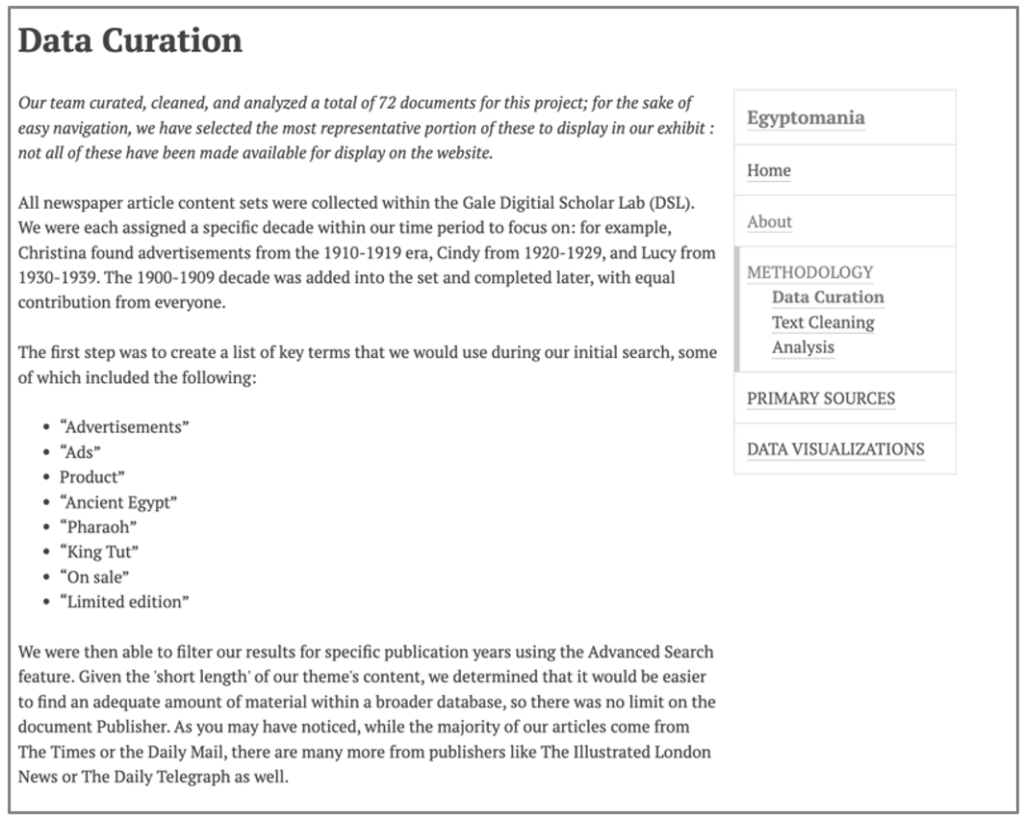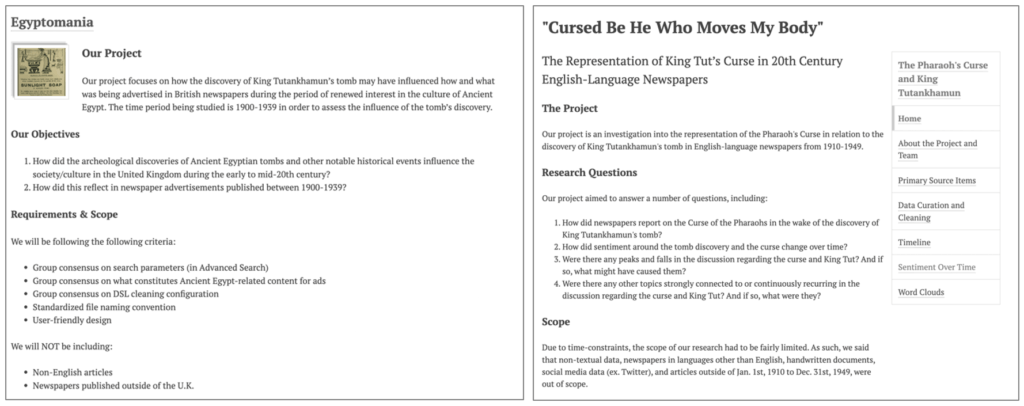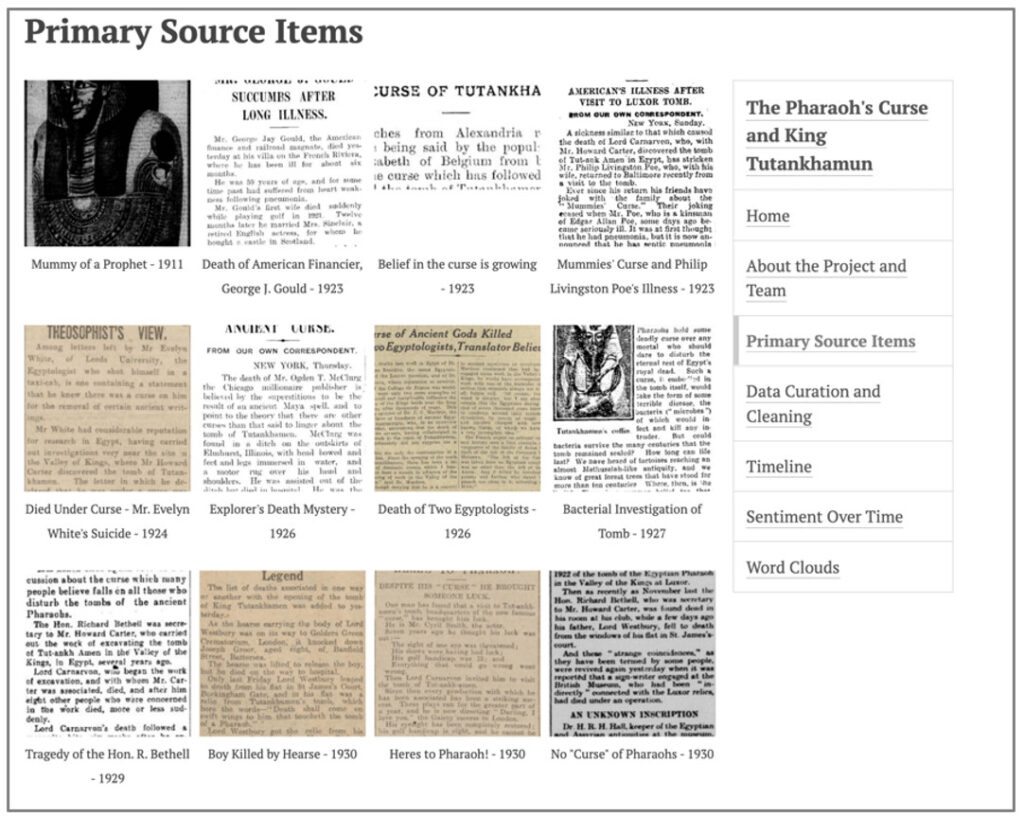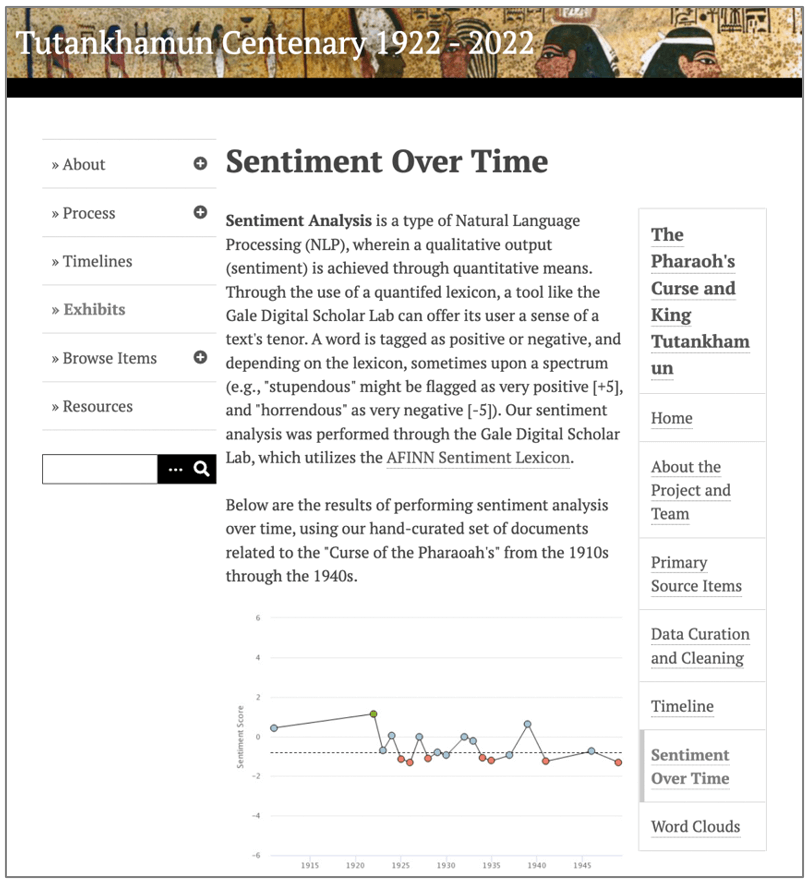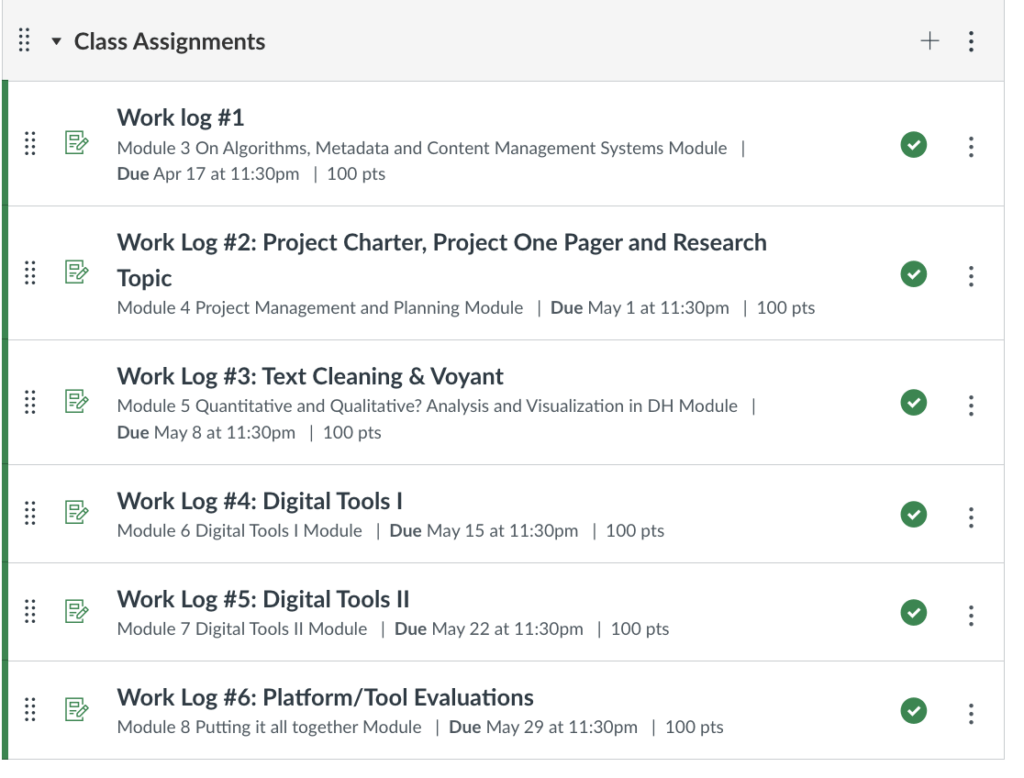│By Dr. Sarah L. Ketchley, Senior Digital Humanities Specialist│
The Department of Middle Eastern Languages and Cultures (MELC) at the University of Washington has a history of supporting work in Digital Humanities (DH) dating back to the 1980s. More recently, the department has offered regular introductory classes in DH, which I have taught since 2015. These are usually topical in nature, i.e., the data we work with in class is related to a particular Middle Eastern theme, often related to travel or archaeology in Egypt, which is my area of research interest. This Spring Quarter 2022, my undergraduates and graduates participated in a class called ‘Digital Media – King Tut and Digital Humanities’ to learn about the theory and processes of building DH projects based on data related to the discovery of Tutankhamun’s tomb in 1922, one hundred years ago.
Challenges and Opportunities
The course presented two pedagogical challenges. First, students came from a variety of disciplinary backgrounds, but few had any knowledge of Egyptology, nor experience with DH. It was important to provide a pathway for all to gain an understanding of the disciplinary history of the class, as well as a solid grounding in DH project work. Classroom experience translated into the development of practical skills such as digital literacy, effective collaboration, and project management.
The second challenge was the nature of the course and its content – we had a lot to cover in just ten weeks, meeting once in person and once online each week. Student teams collaborated to build digital exhibits as their final projects.
Pathways to Disciplinary Understanding
I offered a variety of approaches to introduce the main historical themes of turn-of-the-century Egypt, including several popular, documentary-style videos to set the scene, recent popular press coverage of the centenary, scholarly articles, and book chapters. We then focused on selected contemporary sources – primarily newspaper articles – which students read closely to get a sense of the language and content of the day.
We worked with The Times Digital Archive (a popular Gale Primary Sources archive) to create collections of relevant material, using both the Learning Center in the Times Digital Archive itself, as well as a range of search queries in Gale Digital Scholar Lab to gather class datasets. We were also able to work with articles transcribed by my MLIS Capstone group (described here). The goal was to gather a large corpus of documents that students could then analyse using the Topic Modelling tool to discover prevalent or recurrent themes that they may wish to investigate further. This type of exploratory analysis as a pathway to disciplinary understanding is detailed in this Notes from our DH Correspondent blog post.
Identifying Themes, Developing Projects
Having examined themes and trends in the class content sets, the two teams of students settled on “Egyptomania” and “King Tut’s Curse” as their class research topics, lending cultural depth to the transcribed primary source content already on the class website.
Their data curation then became more targeted as they looked to expand their Content Sets with further related material. They defined specific search terms using Boolean limiters, and as the amount of data in their content sets grew, the teams decided to segment their research by decade so that they could conduct comparative analyses using datasets of a manageable size.
The class project website was created using Omeka, which provides a large selection of useful plugins for the bulk import of digital items along with associated metadata. The CSV Import plugin populates pre-defined Dublin Core metadata fields in Omeka automatically, saving the researcher considerable time. Students developed metadata spreadsheets for each newspaper article or advertisement in their content set, following the template the CSV Import plugin provided so that they could map their columns of data to those in the template. This process also served to streamline the creation of standardised metadata for each student team, since errors and inconsistencies were readily spotted in this format. Once students were satisfied with the data they had collected, they uploaded images and metadata to Omeka, and began the process of analysis and building out their exhibits.
Analysis in Gale Digital Scholar Lab
Students used a variety of analysis methods to answer the research questions they had developed about their data. This was another opportunity for them to become more familiar with the cultural history of the period, since there was also the expectation that they would provide commentary and interpretation of their results.
Project-Based Learning, Assessment and Outcomes
In tandem with the introduction of disciplinary content, I provided students with a scaffolded introduction to the theory and nature of the field of Digital Humanities, specifically text-based project work involving data gathering, cleaning and analysis.
One of my goals is to ensure students understand why they are doing class activities, and to give them a chance to reflect on their process and its outcomes. I have found that a weekly worklog encourages a ‘documentation mindset’ whereby students answer questions that I ask them based on our week’s work. They document their reading and project work, including what they consider to be successful and what didn’t go so well. Documenting failure is a pathway to growth since it provides tangible steps to troubleshoot and fix.
The other main tool for assessment was the final digital exhibit. Providing a detailed rubric for each page and its content provided students with a framework to follow. Breaking each assignment down into manageable and accessible sections helped students map out a path to successful completion of the class and helped them decide on team roles and responsibilities.
The Value of Project-Based Learning
Student feedback from the class was very positive, highlighting the value and relevance of the skills they had learned and – importantly – put into practice.
These skills are readily transferable beyond university, and their value is recognised by employers. No matter what the disciplinary focus, incorporating Digital Humanities into a class syllabus provides invaluable learning opportunities for your students.
If you enjoyed reading this pedagogical Case Study about incorporating Digital Humanities into a course, you may like the other blog posts in Sarah’s monthly series – Notes from our DH Correspondent, including:
- Working with datasets, A Primer
- A global community: Learning and networking opportunities for Digital Humanists
- The value of cross-disciplinary partnerships in the Digital Humanities classroom
- Separating the wheat from the chaff: identifying themes and topics in archives using Gale Digital Scholar Lab
- Doing the digital laundry? Notes on cleaning unstructured text data
- Creating an export workflow with Gale Digital Scholar Lab
- Practical pedagogy with Gale Digital Scholar Lab, Part I: Developing your syllabus and Learning Objectives
- Practical pedagogy with Gale Digital Scholar Lab, Part II: Approaches to project-based teaching and learning
- A sense of déjà vu? Iteration in Digital Humanities project building using Gale Digital Scholar Lab


